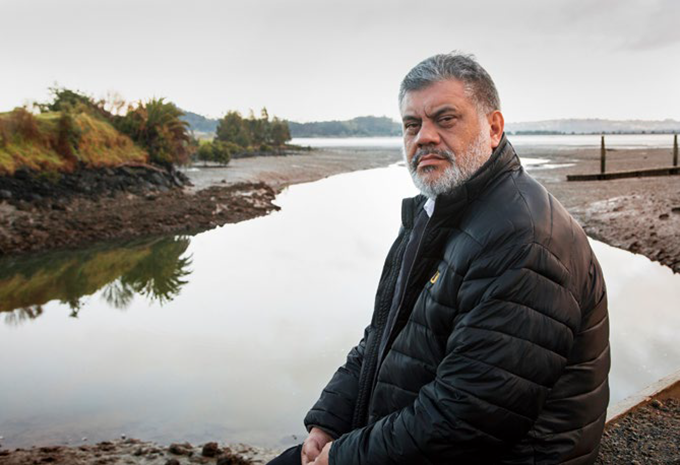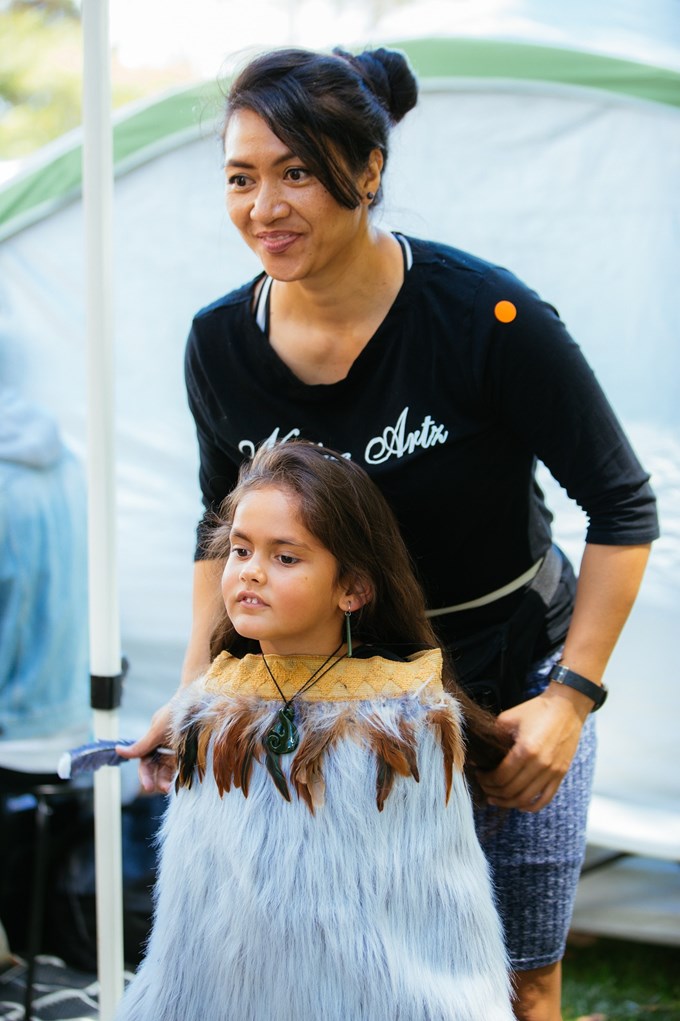Waitangi Day is a time to reflect on the history of partnership in our country and create more understanding between Māori and Pākehā. Charlotte Muru-Lanning looks at what we can expect this year.
As we mark 180 years since the signing of Te Tiriti o Waitangi / The Treaty of Waitangi, Aucklanders are set to come together at a range of events to acknowledge our nation’s shared past and push for a better shared future.
For the third year in a row, Auckland Harbour Bridge will be illuminated by a light display to celebrate Waitangi Day. The collaboration between Auckland Council, Vector and local iwi will run for five nights, from 2-6 February.
Ataahua Papa, Auckland Council’s arts and culture pouārahi Māori (leader), says there are 19 iwi recognised as having mana whenua status in Tāmaki Makaurau. Each Waitangi Day, a different iwi shares its unique history through the Vector Lights harbour bridge light and sound show. Previously, Ngāti Manuhiri and Te Kawerau a Maki have hosted the display. This year, it will be WaikatoTainui’s turn to share its stories of endurance, as one of the iwi of Tāmaki Makaurau.
The show will focus on the tribe and its connection with the Treaty, highlighting each of the leaders of the Kīngitanga (the Māori King Movement) and how they have connected with other Treaty partners.
Rahui Papa, principal negotiator for Waikato-Tainui, says although the first monarch of the Kiingitanga, Pootatau Te Wherowhero, did not sign the Treaty, it is still an extremely important part of tribal history.*

In fact, King Taawhiao, the second monarch, took a petition to England in 1884 to have the Treaty honoured, an action that would help set it up as a platform for all iwi in Aotearoa.
The significance of the Treaty remains, he says:
“In a modern context, Waitangi is about nationhood, about realising a partnership between Maaori and Paakehaa, opening the door for all communities to be part of Te Tiriti o Waitangi.”
There will be a number of daytime events, with the well-established Waitangi ki Manukau festival returning to Hayman Park. The council has been working alongside community groups for more than 20 years to deliver this important recognition of Manukau as a location where the Treaty was signed. In 2020, the council will partner with the Manukau Urban Māori Authority to present an event where all Aucklanders are invited to learn about the Treaty and its relevance in today’s setting.
For Waikato-Tainui, Manukau plays a vital role in its history, Rahui Papa says. “It was a highway of commerce, a highway of koorero, a highway of tikanga, right from when Tainui waka arrived, to the present day.”
The first waka arrived at Ihumaatao and since then, Manukau has had ongoing significance for the iwi – notably, the signing of He Whakaputanga (the Declaration of Independence of the United Tribes of New Zealand) by Te Wherowhero in 1839 on the shores of the harbour. The declaration aimed to protect Maaori rights to sovereignty over their own territory.
For Waikato-Tainui, Rahui Papa says, “it is the founding document of the sovereignty of our people, and an acknowledgement by other countries of our sovereignty over our domains, our lands, our mountains, our rivers, our harbours, our waterways".
“The significance of the Declaration and Te Tiriti coupled together has created a platform throughout the generations – that we are home, that we are sovereigns of our own destiny. All those raupatu [confiscations] occurred, but we never gave up that notion of sovereignty and nationhood for ourselves.”
Manukau is also a reminder of the legacy of Dame Ngaaneko Minhinnick, an advocate for the protection of the Manukau Harbour environment and a pioneer of Waitangi claims. She led a delegation to the United Nations to seek global support for protection of the harbour and fronted a Waitangi Tribunal claim to get it cleaned up.
Rahui Papa says judgement in favour of Minhinnick led to Maaori provisions in the Resource Management Act. “She is the vanguard of enforcing that the Treaty and the Declaration must be considered in relation to governmental policy, local government policy and a whole number of other things.”
Beyond the Manukau festival, Aucklanders can mark Waitangi Day with live music, food and family fun at large gatherings elsewhere in the city. There will be events at Hoani Waititi Marae in Oratia and at Ōkahu Bay in Ōrākei. For the first time, Te Whānau o Awataha will host an event at its marae in Northcote, the first major Waitangi Day festival to be held on the North Shore.

Each of these events reflects the diversity of Māori, both mana whenua and mātāwaka, in Tāmaki Makurau. “We have different Māori entities, each with their own stories and relationships with the Treaty,” says Ataahua Papa.
There has been growing consciousness among Aucklanders of this diversity, stemming from trends such as the increased uptake of te reo classes and recognition of Māori concepts, but also from public interest in current events.
“The events planned are about the individual identity of these groups,” she says.
“They’re also about reinforcing unity between Māori. We’re all sitting down at the same table and working together and figuring out how we can help each other to make our events for Waitangi successful without losing individual identity … What’s good for Māori is good for Aotearoa. If we can get that mix right, then Aotearoa benefits across the board.”
* In recognition of Auckland Council’s iwi manaaki partnership, we have adopted the Waikato-Tainui written te reo style of using double vowels in place of macrons for quotes and facts from the iwi's representative.


